Gudsen Moza Air
$ 599, ($ 798 for the thumb controller kit)
www.Gudsen.com
There are whole lot of things about shooting video that are difficult, such as getting to grips with the specific terminology, mastering audio, understanding input/output files types and finding your way around new software. All of this stuff can be learnt, but what I struggle with most, and which just wrecks most of the videos I shoot, is just holding the camera steady. This beats me even when I’m standing still, but it destroys every beautiful or dramatic scene I encounter if I have to so much as pan across a view let alone actually move my feet as well. I can achieve smooth motion sometimes, but with such a degree of concentration that everything else goes out of the window. In short, I find this aspect of shooting movies almost impossible to overcome.
The Moza Air is designed for compact system cameras and small to medium sized DSLRs
I guess I’m not entirely alone here, as there are now quite a number of mid-sized gimbals designed to help videographers achieve smooth footage when they are moving with a handheld camera. The Zhiyun Crane has been a popular option for some time, but newer on the scene is the Gudsen Moza Air.
Gudsen had mostly produced gimbals for small devices and mobile phones, but has recently moved into support for larger, heavier cameras. The Moza Air is designed for compact system cameras and small to medium sized DSLRs with a maximum payload of 5.5lbs/2.5kg – a restriction which actually only really excludes top-end professional models.
Specification
The Gudsen Moza Air is motorized gimbal platform-on-handle designed to create smooth motion and steadier stationary views for videographers. It is made from aluminum tubing and weighs 2.4lb/1.1kg when it is all put together and the batteries are loaded. The large camera platform offers two cut-out runners and two sizes of threaded screws, as well as plenty of room to shift cameras backwards and forwards to find a balance. There is less side-to-side space than front-to-back though, with the maximum gap between the camera retaining screw and the right hand arm being 3 7/8in/97mm. This isn’t necessarily an issue when it comes to actually fitting a camera in that space, so much as for attaching cables to ports on the right hand side of the camera.
The platform allows continuous 360° yaw, tilt and roll movements, all of which can be controlled via the joy stick on the main handle. Built-in Bluetooth 4.0 allows these actions to be controlled remotely via a separate thumb controller too, and users can take charge of settings and motion via the Moza Air app. Further connections come in the form of a micro USB port for connection to camera remote control sockets.
Three 3.7V lithium ion batteries drop into the handle to power the device and Gudsen claims their 2000mAh capacity will drive the gimbal for between four and eight hours. The dramatic discrepancy between the battery life figures is a function of the range of weights the gimbal can accommodate as well as the differences in power required to hold a camera in the normal position and at some contorted angle.
Handling
The Moza Air comes very nicely packaged in a hard case with a range of accessories. I’m not entirely sure what is in the standard kit, as I received two kits each with different accompaniments. The basic setup includes the main handle with the gimbal as well as the battery compartment and the thumb controller. Also in the box is a set of handlebars is that allow the device to be used with two hands while a second person deals with the head movements via the thumb controller.
A set of cables allows you to connect the handle to certain compatible cameras for stop/start recording controls and there’s a support bracket for heavy lenses. In one package I got a mini-tripod that attaches to the threaded base of the handle. This is very useful for getting the camera balanced and can also be used to extend the handle for an even greater field of motion.
Once the gimbal is assembled you have to balance the camera in the main cradle. It’s important to get the kit as well balanced as possible before switching the gimbal on so that you get the maximum out of the movements possible and so that you don’t use more power than you need to. Getting the balance right can be time consuming especially the first time you have to balance a kit. You have to remember to get the camera exactly was you want to use it first as well, as even taking the lens cap off, or flipping out the camera’s screen, will upset the balance.
Having a tripod, mini or not, with you is a good idea for when the kit needs to be altered.
Switching lenses during a shoot means taking a break to rebalance the gimbal, which is difficult to do in the field if there is nowhere level to position it – so picking a non-extending zoom makes life a bit easier. Having a tripod, mini or not, with you is a good idea for when the kit needs to be altered. Using in-camera levels is handy for ensuring the camera is perfectly balanced, if your camera has them.
The Moza Air makes leveling reasonably easy by having arm-brackets that slide nicely to allow small adjustments. There are three brackets to get in balance so this isn’t a ten-second job – though measured markings on each of the arms makes positions easier to return to when re-attaching a previously used camera and lens combination. Some way of keeping the camera screw in place would be really useful, and in fact a quick release plate even better, so that after moving the camera for a battery change or a card swap you don’t have to rebalance it all over again.
 |
One of the more obvious differences between the Moza Air and the Zhiyun Crane is that the Moza Air features controls that face the user, so they can be operated with the thumb. There are only two control points and each can perform a range of tasks according to how many times it is pressed. It doesn’t take too long to commit these functions to memory, and I appreciated having all the controls in one place while trying to keep an eye on the screen while filming – so I guess it is better than having a collection of dedicated buttons for each task.
The stop/start function is very useful, and the proximity of the thumb rocker is handy for controlling the camera angle without having to change the way your hand is gripping the handle. The rocker controls the left-right/up-down direction of travel of the gimbal, but there’s no way to tilt the camera left-to-right, and it takes some practice to get the motion slow and smooth.
Despite its light weight, in use the Moza Air gets quite heavy
Despite its light weight, in use the Moza Air gets quite heavy. That isn’t an inherent fault of the device so much as the nature of holding a camera on a stick at an angle for a long time.
If you record sound from a hotshoe mounted microphone you’ll want to choose a small one that doesn’t restrict your movements too much. When using the gimbal in the upright position there is loads of room for a microphone, but as soon as you begin to tilt the gimbal forward into the flashlight position the brackets of the device will clash with the back of the microphone.
When the camera is slung under the gimbal for low angle shots there is even less space for a microphone, but there are accessory points where a mic can be attached. I used the Rode VideoMic Pro and Pro+ in the hotshoe for most of this test, and attached it to the handle bars when shooting with the camera slung low.
Motion in action
The second version of this gimbal that I received was dramatically improvements over the first very early version I used. Its motor seems much stronger, or better tuned, so it can hold more weight in more difficult positions for longer without suddenly giving up and throwing the camera around – which happened a lot with the early model.
The ability of the gimbal to support and steady the camera at quite a wide range of angles is pretty amazing, and allows the user to perform crane-like sequences with the camera coming from a low angle up to an overhead view in one smooth motion. The side-to-side support is also very good, and though side movements can create clashes with cables and screens sticking out to the side of the camera.
at the extremes, the head can’t hold the camera for long before flipping out
Using the controller on the Moza Air’s handle you can introduce tilt and twist actions. With the handle in the upright position you can rotate the camera 360 degrees about the vertical axis while the tilt motions are more moderate. Although I didn’t expect to be able to get the camera to look directly down I’d rather hoped to for a better range of tilt angles – and at the extremes the head can’t hold the camera for long before flipping out.
The controller on the handle doesn’t really allow fine movements or adjustments during filming as the increments are crude and a bit jerky, so users will be better off using the Bluetooth thumb controller that comes in the kit. With a bigger joystick and a wider range of actions this provides a little more precision. The thumb controller can instruct the head to move at different speeds as well as customize the way it works and to instruct the system which camera is in use. It is important for the system to be informed of the camera brand so that the cabled remote that connects the head and the camera can operate properly.
 |
The new Mimic Motion Control feature makes a massive difference to the finesse with which movements can be communicated to the head. Attaching the thumb-controller to the handle bars and setting it to the appropriate mode allows users to control the head remotely just by moving the handle bars – and the head follows every action. This allows much finer movements as well as complete flexibility in the speed at which the head moves. It makes a huge difference to how the camera angle can be dictated when the rig is mounted on a tripod or being carried by a third party.
recording can be initiated and stopped using either the thumb controller or from the buttons on the gimbal’s handle
Using the cabled remote, which connects the camera’s remote control socket to the gimbal via USB, recording can be initiated and stopped using either the thumb controller or from the buttons on the gimbal’s handle. Canon users’ cameras compatible with the system can be made to focus from the remote buttons as well. The stop/start feature is particularly useful as it means you don’t have to alter your grip on the handle to kick off the recording – and suffer a few seconds of wobbly footage at the beginning and end of each clip. This can save time in editing and quite a lot of memory card capacity during a long shoot with a number of scenes.
The App
I used the smartphone app with my iPhone 5s and found early versions of it slightly prone to hanging and displays lagging behind what the head was doing. The app offers a virtual joystick for controlling the head, but I found the lag such that accurate instructions proved hard to communicate.
The app also allows you to program the speed of the head as well as to calibrate the motors and determine the angles of movement in each of the controllable axes. The early version was not especially easy to use, but the more recent update has made a big difference.
The head’s timelapse feature is also controlled via the app, and gives filmmakers the opportunity to determine start and end points for motion in the sequence as well as three other points for the head to cover during the action. Thus the head doesn’t just move from side to side or up and down – it can move in all directions across the four shooting segments of the timelapse. Initially the head moved continuously during the sequence, which wasn’t ideal for those wanting to use long shutter speeds. Consequently many of my first timelapse sequences are a bit jerky.
The recent firmware update allows the head and camera shutter to synchronize and offer a move-stop-shoot-move routine that holds the camera still while the shutter is open – with cameras that are compatible with the head’s cabled remote. The timelapse feature of the app now offers plenty of control over the end result, and with cameras that plug into the head it will start and stop the shooting too.
Performance
I have been very pleasantly surprised by how well this gimbal performs. I had expected it to be of some assistance in keeping the camera stable during walking shots, but didn’t expect the degree of correction that it provides when running. When kept within the perimeters of the angles it can handle the gimbal works really very well, so it is a question of finding where those extremes are. Inevitably I wanted it to be able to cope with angles it could not manage, but in the course of normal shooting I suspect the more difficult poses I demanded in testing would not be required. I found that the more I got used to what it can do the more I was able to compensate with my own movements so that the gimbal didn’t have to work so hard.
There were a number of occasions on which the humming of the motor rose to a level that would be noticed in the audio. These occasions were not limited to handheld and demanding shooting with heavy equipment, but also occurred while the Moza Air was mounted on a tripod. Usually the whirring could be solved by rebalancing the camera, but sometimes that wasn’t enough – but it would go away by itself.
Battery life isn’t too bad, and I found a set of three could keep the Moza powered for at least four hours. I also found though that removing the batteries from the handle in between shoots was a surer way of there being power in them the next time of shooting.
In general, I thought the Moza Air behaved rather well throughout the test, and it allowed me to get plenty of shots I wouldn’t have managed otherwise, and the updated timelapse feature is actually really useful.
Conclusion
The Gudsen Moza Air is slightly less than perfect in some respects, such as the complications of getting the camera balanced to begin with and in the arms clashing with each other when in certain positions. However, the company doesn’t appear to be sitting on its laurels – there have been really quite significant updates even during the period of this test. It is an excellent solution though for holding a recording camera steady for 80% of the shots any videographer is going to want to shoot. It can’t do angled up or down shots very well, but for everything else I found it a great assistance.
In the world of video, where everything seems to cost a small fortune this device is relatively affordable
Critically, the Moza Air has allowed me to create a video that doesn’t look like it was shot by a monkey even though this is pretty much the first time I have shot more than two clips that were intended to be stuck together, and my videography experience is slim to say the least. In the world of video, where everything seems to cost a small fortune this device is relatively affordable and actually presents very good value for money considering the difference it will make to your footage.
Yes, some of the mechanical design is in need of refinement, but for the most part I can live with that for now – although when the motors give up when holding the camera during a difficult angle it can be frustrating. More powerful motors would allow it to hold better and would reduce the whine and wobble that can be produced in the extremities of the head’s operating envelope, but I suppose that would cost more money. If you don’t push it too hard, and don’t expect too much you will be very happy indeed with the Moza Air – as I have been.
This little movie was made for a bit of fun – but primarily to demonstrate what the Moza Air can do in a range of situations. It was shot with the Panasonic Lumix DC-GH5 in VLogL and edited in Davinci Resolve. I used two Moza Airs – one to support the camera for the whole of the shoot and the other in the box that we could film being assembled. It’s neat that Gudsen supplies a hard case for the kit, but it struck me as something you might see in a gangster movie – hence the theme we went with for this clip.
Pros:
- Relatively good value
- Supports most DSLRs
- Nice button controls
- Good stabilization
- Mimic Control is excellent
Cons:
- Build quality could be refined
- Could be made lighter with different materials
- Hard to balance the camera quickly
For more information see the Gudsen website.
Articles: Digital Photography Review (dpreview.com)



















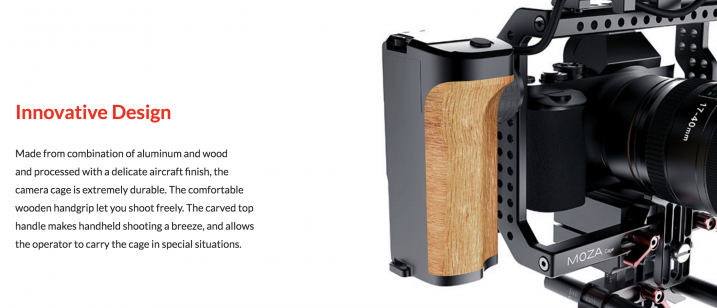
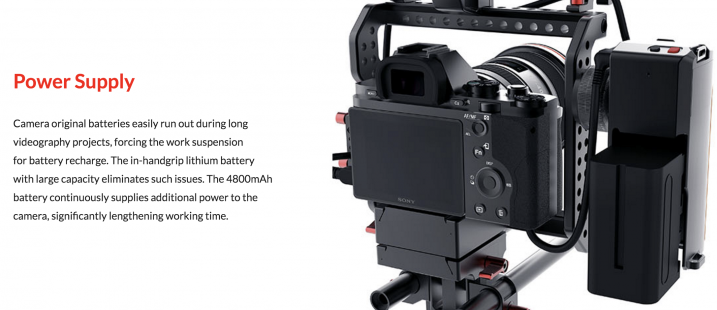


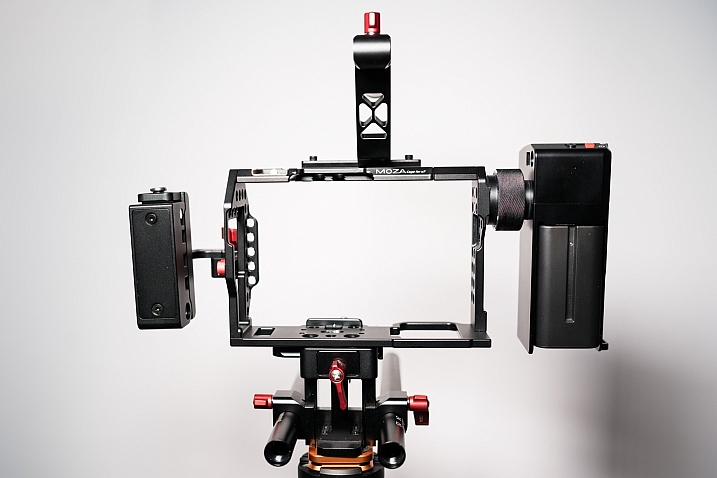
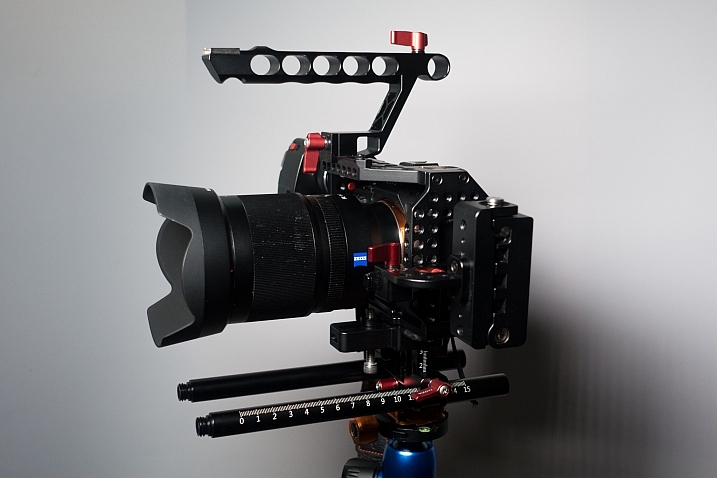
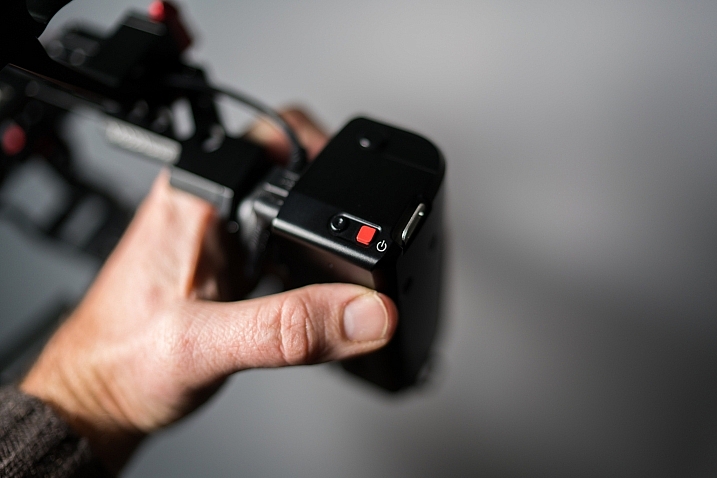
You must be logged in to post a comment.